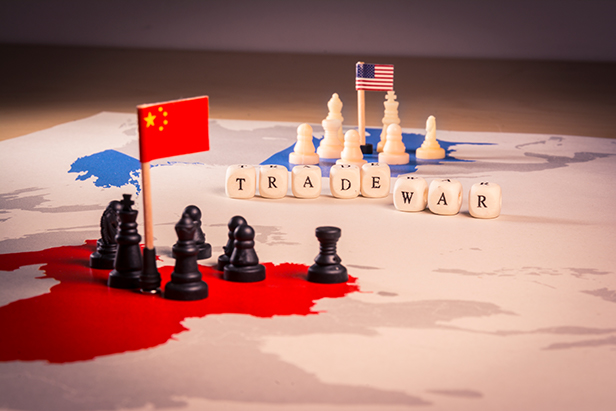News June 12, 2019
Trump Threatens Tariffs On $300 Billion More In Chinese Imports
Additional levies would go into place immediately if China’s president fails to meet with Trump at the G20 summit, the U.S. president said.
President Donald Trump said that he will impose tariffs on an additional $300 billion in Chinese imports if China’s president, Xi Jinping, fails to meet with him at the Group of 20 (“G20”) Summit later this month in Japan.

Trump made the statement during an interview this week with CNBC, saying that if no meeting occurs, he will immediately levy the new tariffs. At this point, there have been no public indications from China that Xi plans to skip a meeting with Trump at the summit, which is scheduled for June 28 and 29 in Osaka. Still, China has not confirmed there will be a meeting either.
“We have noted that the U.S. publicly stated many times that it looks forward to arranging a meeting between the Chinese and U.S. presidents on the sidelines of the G-20 summit. If we have this information, we will release it in due time,” Geng Shuan, a spokesman for the Chinese Foreign Ministry, told reporters.
China will respond firmly if the Trump administration decides to levy tariffs on $300 billion Chinese goods, said Foreign Ministry spokesman Geng Shuang. “China does not want to fight a trade war, but we are not afraid of fighting a trade war,” he said. pic.twitter.com/v9x5SeKZ5A
— Global Times (@globaltimesnews) June 11, 2019
Should Trump proceed with the threatened tariffs on an additional $300 billion in Chinese products, his administration will have placed a tariff on virtually everything the United States imports from China. That includes, of course, most promotional products – a potentially significant problem for the stateside promo industry, which imports the vast majority of products sold domestically from China.
Tariffs of 25% that are already attached to $200 billion in Chinese imports have been driving up prices on ad specialty items that range from bags and drinkware, to certain stationery, hand sanitizers, various apparel items, charging cables and more. Additional price increases are expected to hit starting in Q3 if the tariffs remain in place. Should Trump put levies of 25% -- or even “much higher than 25%” as he threatened Monday -- on the additional $300 billion, it’s likely that more increases on a broader range of China-imported promotional products would occur, industry executives have said.
“This is pretty distressing for all of us,” said Eddie Blau, CEO of Top 40 supplier Innovation Line (asi/62660). “The unknown of this new reality adds a lot of stress and anxiety.”
The promotional products industry, with its deep reliance on Chinese manufacturing, has been caught up in the fray of the U.S/China trade war. Price increases, destabilized annual prices, trimmer margins (in cases), and an invigorated push to diversify sourcing beyond China (a complicated endeavor) are all issues promo firms have contended with as a result of the trade battle.
For suppliers, increased costs are mounting because of the tariffs. Citing a filing made with the Office of the United States Trade Representative, Politico reported that Top 40 supplier Polyconcept North America says that the tariffs Trump has already imposed on China will cost the company more than $18 million this year. PCNA’s tariff burden would more than double to $45 million if Trump levies tariffs on all Chinese goods, PCNA said. “For a company with $500 million in sales, this represents a sudden and significant increase to our product costs, which must be passed to our customers and (ultimately) to the American consumers,” said PCNA president David Nicholson in the filing.
Despite the challenges promo firms are facing, aggregate distributor sales increased 3.4% in the first quarter of 2019. “Our industry is resilient and creative,” said Bill Korowitz, CEO of Top 40 supplier The Magnet Group (asi/68507). “Before tariffs, we had Prop 65. Before that, it was product safety. We will get through this with honest conversation and dialogue. Dialogue takes time, which is the impact to our companies, but we will get through this and move on to the next challenge.”
The tariffs are a key component of the ongoing trade war between the U.S. and China. Negotiations for a new trade deal between the world’s two largest national economies hit a wall in May. Trump then proceeded with threats to up the tariff rate from 10% to 25% on $200 billion of Chinese goods. China responded by escalating tariffs on $60 billion of U.S. exports. Beijing also stepped up its anti-American propaganda, saying the United States is committing “economic terrorism.”
